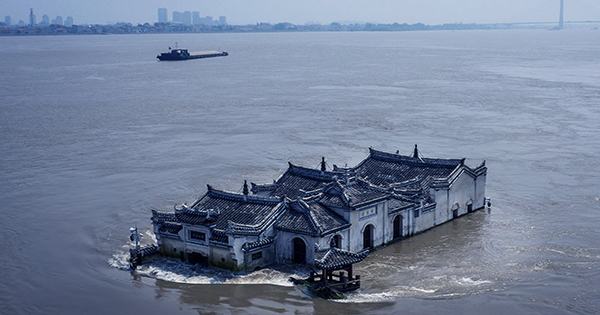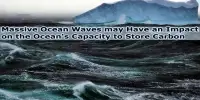A groundbreaking study has revealed that many of the largest aquaculture food producers worldwide are extremely sensitive to human-induced environmental change, with some of the highest-risk nations in Asia, Latin America, and Africa displaying the lowest potential for adaptation.
According to the report, environmental change poses significant risks to more than 90% of the world’s “blue” food production, including aquaculture and capture fisheries, with numerous developed Asian and American nations likely to experience the biggest production-related risks.
The authors of the new article conducted the first-ever global analysis of environmental stressors affecting the amount and safety of blue food production globally, ranking nations for the first time based on their exposure to significant stressors. Algal blooms, sea level rise, varying temperatures, and pesticide exposure were among the 17 stressors surveyed.
“Environmental stressors do not care about national borders,” noted Ben Halpern, co-lead author and professor at UC Santa Barbara and director of the National Center for Ecological Analysis and Synthesis. “Stressors get moved by air, water, species, and humans, connecting land to sea and ecosystem to ecosystem.”
The research published by Nature Sustainability, titled “Vulnerability of Blue Foods to Human-induced Environmental Change” is one of seven scientific papers published by the Blue Food Assessment (BFA) as part of a global effort to inform future aquatic food sustainability.
The report notes that, in addition to climate change, all continents, including some of the world’s largest producers of blue foods like Norway, China, and the United States, have highly vulnerable blue food production systems. However, it also contends that there is frequently a lack of understanding regarding the complexity of stressors causing environmental change.
“We have only scratched the surface in our understanding of how environmental stressors are connected, and how they can both negatively impact the production and safety of the resulting blue foods,” said Ling Cao, co-lead author and professor at the State Key Laboratory of Marine Environmental Science at Xiamen University.
“Understanding the complexity of these stressors, and their cascading impacts, will be essential in developing successful adaptation and mitigation strategies,” she said.
Although we have made some progress with climate change, our adaptation strategies for blue food systems facing environmental change are still underdeveloped and need urgent attention.
Rebecca Short
The paper cited species invasion, inland eutrophication or algal blooms, ocean warming and sea level rise as the main threats to blue food production in the U.S., with freshwater and marine fisheries facing disproportionately large risks.
As the largest blue food producer, China’s freshwater aquaculture is also highly exposed to inland eutrophication and severe weather events, the research shows.
The authors further contend that nations like Bangladesh, Eswatini, Guatemala, Honduras, and Uganda that are very vulnerable to environmental change but lack the necessary adaptation capabilities should receive special attention.
According to the study, aquaculture was more prone to illness and hypoxia, or low oxygen levels, whereas marine fisheries were generally more vulnerable to climate-related stressors, such as temperature increases and acidification.
“Although we have made some progress with climate change, our adaptation strategies for blue food systems facing environmental change are still underdeveloped and need urgent attention,” said Rebecca Short, co-lead author and researcher at the Stockholm Resilience Centre.
One of the report’s main recommendations is a demand for increased transboundary cooperation, adaptation measures that take into account the fact that the ecosystems on which blue food production depends are intricately intertwined, and that environmental change in one place could have repercussions elsewhere.
In addition, the authors urge high-risk nations to diversify their blue food production in order to counteract the effects of climate change in the absence of adequate mitigation and adaptation measures.
The article also emphasizes the urgent requirement for increased stakeholder involvement in comprehending, monitoring, and reducing constraints on blue food production systems. Indigenous knowledge will be critical for strategic planning and policies to mitigate and adapt to environmental change, particularly for artisanal fisheries and heavy marine fisheries-dependent countries, such as Small Island Developing States (SIDS).
The study also includes a larger dataset that assesses nations according to how exposed their blue food production systems are to different environmental stressors.
















